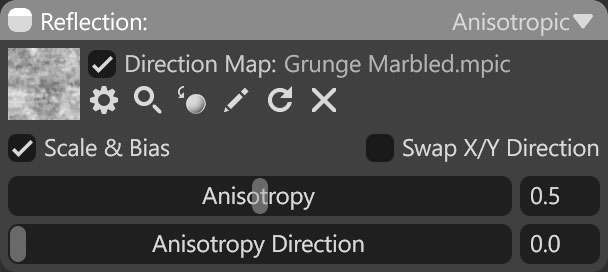The Anisotropic shading model simulates materials whose surface properties vary with direction. This creates directional reflections that change depending on the viewing angle, making it ideal for materials like hair, fur, brushed metal, or fabric.
The primary texture map input for this model is a Direction Map (RGB, optional), which defines the local orientation of anisotropy on the surface, giving precise control over how reflections stretch and flow. Direction maps can be painted using Toolbag’s Texture Projects or authored in third-party applications.

| Setting | Description |
|---|---|
| Direction Map Texture Slot | Add a direction texture by clicking on the slot or dragging and dropping one from the Library. |
| Scale & Bias | Remaps vector data from the range [0,1] to [-1,1]. Disable this setting with floating-point textures. |
| Swap X/Y Direction | Swaps the direction map content in the red and green channels. |
| Anisotropy | Sets the intensity of the anisotropic reflection effect, used to define the highlight shape for complex surfaces. |
| Anisotropy Direction | Sets the direction in which the anisotropic reflections face. This value can be used for hair when all UVs point in the same general direction. |

